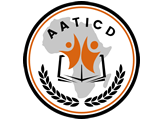Why Attend
Why is it that certain speeches and presentations last forever in our memories while others fade into oblivion by the time they are finished? Is it the topic, the speaker or the material used? On this course, you will learn how to use every resource at your disposal to elevate your speeches and presentations from mundane to captivating. By helping you build exceptional introductions, coherent content and climactic closings, the course will have a significant impact on the effectiveness of the speeches and presentations you deliver, regardless of topic, audience or media used. The course is quite hands-on because it will provide you with the opportunity to deliver a number of speeches and presentations (of your choice) and receive feedback on your design and delivery while showing you proven techniques to combat public speaking anxiety and present with charisma.
Course Methodology
The course uses a mix of interactive techniques, such as brief presentations by the consultant and the participants, role plays (rehearsed and impromptu), playback of videotaped performances (where permissible) and individual and group feedback.
Course Objectives
By the end of the course, participants will be able to:
- List the main causes of boring and ineffective presentations and ways to overcome them
- Prepare for a presentation using a systematic and easy to follow the approach
- Build a presentation using the triple S rule
- Project the right verbal and non-verbal characteristics essential in powerful presentations
- Pinpoint the main reasons that lead to Public Speaking Anxiety (PSA) and ways to eliminate them prior to presenting
- Use the most commonly available visual aids to support their presentation and make it visually appealing
Target Audience
All those who wish to improve their presentation skills to a noticeable level using a strictly hands-on approach. The workshop-type course is particularly helpful for people who have to conduct sales, business development or periodic presentations to senior management.
Target Competencies
- Presentation design and delivery
- Public speaking
- Verbal and non-verbal communication
- Rapport building
- Influencing and inspiring
- Feedback
- PowerPoint
Location:
South AfricaTraining Dates:
Each course starts every Monday of each week. Please book your training on a date that is a Monday.Course Duration:
Unit Standard:
NQF Level:
Number of Credits:
Course Fees
Note: Please fill in the online application form on the left or bottom if this page to receive a quotation with detailed pricing from AATICD.How to Apply:
To Apply Simply Fill in the Online Enquiries / Applications form on the Right Sidebar or Bottom of this website https://www.aaticd.co.zaNB:
When filling the online application form; please take note of your desired Training Month, Duration in Weeks and Training Session. This will give us the exact dates you will be attending your classes.Also note that Tuition Fees must be paid upfront on or before training start date. This is to ensure that all resources are made availabe for you before you start. You will not be allowed into training if fees are not paid and verified.
Also note that Tuition Fees Cancellations must be made 14 business working days before the starting date of training. This will allow us to do a 50% refund of the total amount paid. If cancellations are made thereafter note that no refund will be made to delegates.
Tuition Fees include teas and lunch as well as either a laptop or tablet which a delegate will take home free of charge.
Tuition Fee DOES NOT include Accommodation, Dinners and other Extra Curricular Activities or Incidentals. Delegates are expected to fund this on their own. AATICD will not be held accountable for any incidents to delegates.
In-House Trainings are also available for 3 or more delegates for any duration. Please consult with our Administration for such In-House training bookings.
Course Outline
- Introduction
- Difference between presenting and PowerPoint clicking
- Why most presentations fail to leave an impact
- Attributes of an effective presentation
- Importance of preparation
- Ms. Clicker and why you should be aware of her presence
- Mr. Murphy and how he can ruin your presentation
- Overcoming boring pitches and presentations
- Preparing for a presentation
- Gathering the raw data
- The various sources of data and presentation content
- How much information should you begin with
- Filtering the information
- Triple S rule
- Deciding on time allocation: how will you know how much time you need
- The formula of substance, style and support and its impact on the way you present
- The hamburger analogy: why the content of substance should not be expanded
- When to focus on style and when to enhance support
- The framework of an effective presentation
- Opening with a win: how to win the audience’s attention
- Preview: what should be mentioned in the outline
- Key points of a presentation
- The psychological rule of 3
- Recapping before the finish: common tips and pitfalls
- Closing with a bang
- Body language in a presentation
- The hands, legs and the eyes
- To move or to stay put
- Tips for effective body positioning
- Guidelines for animating the legs and hands
- Characteristics of captivating verbal delivery
- Avoiding clichés and euphemisms
- The dangers of smart casual
- Dress and appearance: what are the rules
- Public Speaking Anxiety (PSA)
- Reasons why most people get nervous
- Adrenalin and its effect on presentations
- Dealing with PSA: short and long term solutions
- What do great presenters do
- Visual aids
- Use of objects and props for visual impact
- Hand-outs: when and how to circulate them
- Secrets and techniques for using flip charts
- Pictures and images: the trends today
- PowerPoint: what every presenter should know




